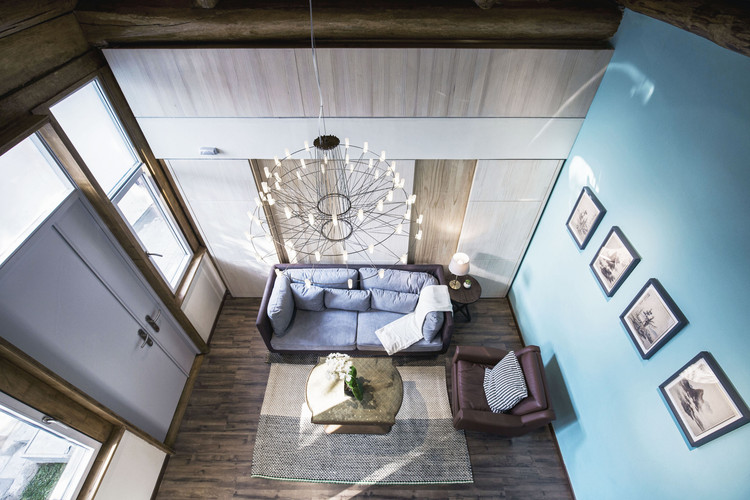

Text description provided by the architects. The project is situated at the main house in Qingping Hutong, Beijing; known locally as a da-za-yuan, which translates as "big messy courtyard shared by several houses". The owner’s parents both live in the property, suffer from Alzheimer disease, which their mother being wheelchair bound. This meant that keeping the traditional Chinese courtyard house, exploring the concept of co-living between the young and elderly, and designing a comfortable home, all within a limited living space was the main objective. The project answers the questions which China has in accommodating an increasingly aging population.

The plan was to construct an additional steel roof at the base whilst keeping the hutongs original wooden structure - with the new steel structure expanding the living space by allowing for a second floor. The architects resolved common poor lighting conditions found in traditional hutongs by increasing the size of the windows on the facade, incorporating louvers into staircases, and implementing a playful circular sky light into the kitchen. These design features not only add character to the new home, but allows for light to pour into the interior spaces from all angles.

Vibrant plants and greenery flow up from the courtyard floor in a "Z" like manner, and onto the kitchen rooftop that surrounds the skylight. The head of CAA, Liu Haowei describes this feature as “Old Beijing walking in the sky”

The result is a project that follows CAA's core values; embracing the constrains of unique sites, and elegantly balancing between historic preservation and modern living. The Qingping Hutong House integrates light, openness and contemporary style into a limited space, creating a new hutong lifestyle for all.
































